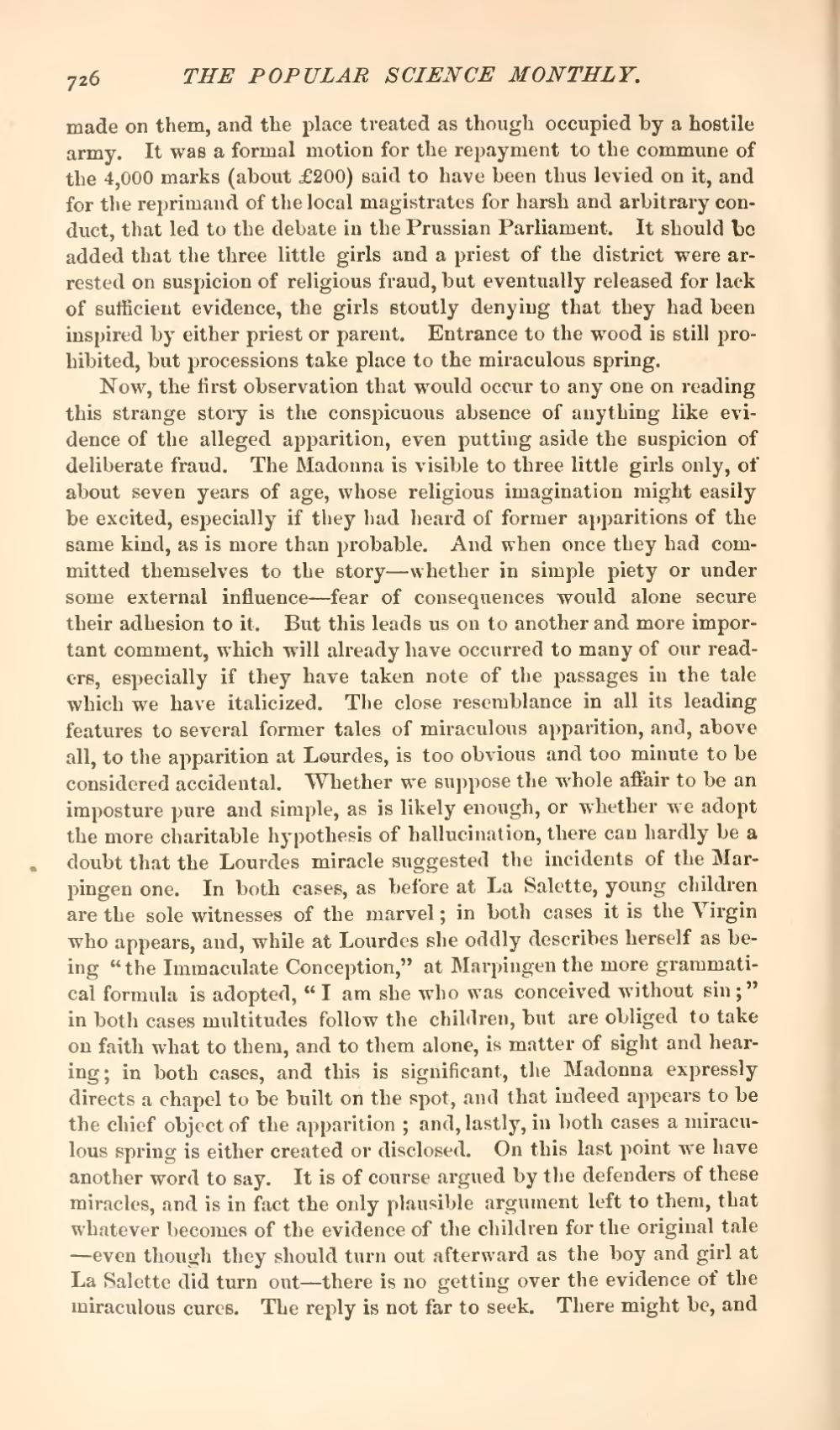made on them, and the place treated as though occupied by a hostile army. It was a formal motion for the repayment to the commune of the 4,000 marks (about £200) said to have been thus levied on it, and for the reprimand of the local magistrates for harsh and arbitrary conduct, that led to the debate in the Prussian Parliament. It should be added that the three little girls and a priest of the district were arrested on suspicion of religious fraud, but eventually released for lack of sufficient evidence, the girls stoutly denying that they had been inspired by either priest or parent. Entrance to the wood is still prohibited, but processions take place to the miraculous spring.
Now, the first observation that would occur to any one on reading this strange story is the conspicuous absence of anything like evidence of the alleged apparition, even putting aside the suspicion of deliberate fraud. The Madonna is visible to three little girls only, of about seven years of age, whose religious imagination might easily be excited, especially if they had heard of former apparitions of the same kind, as is more than probable. And when once they had committed themselves to the story—whether in simple piety or under some external influence—fear of consequences would alone secure their adhesion to it. But this leads us on to another and more important comment, which will already have occurred to many of our readers, especially if they have taken note of the passages in the tale which we have italicized. The close resemblance in all its leading features to several former tales of miraculous apparition, and, above all, to the apparition at Lourdes, is too obvious and too minute to be considered accidental. Whether we suppose the whole affair to be an imposture pure and simple, as is likely enough, or whether we adopt the more charitable hypothesis of hallucination, there can hardly be a doubt that the Lourdes miracle suggested the incidents of the Marpingen one. In both cases, as before at La Salette, young children are the sole witnesses of the marvel; in both cases it is the Virgin who appears, and, while at Lourdes she oddly describes herself as being "the Immaculate Conception," at Marpingen the more grammatical formula is adopted, "I am she who was conceived without sin;" in both cases multitudes follow the children, but are obliged to take on faith what to them, and to them alone, is matter of sight and hearing; in both cases, and this is significant, the Madonna expressly directs a chapel to be built on the spot, and that indeed appears to be the chief object of the apparition; and, lastly, in both cases a miraculous spring is either created or disclosed. On this last point we have another word to say. It is of course argued by the defenders of these miracles, and is in fact the only plausible argument left to them, that whatever becomes of the evidence of the children for the original tale—even though they should turn out afterward as the boy and girl at La Salette did turn out—there is no getting over the evidence of the miraculous cures. The reply is not far to seek. There might be, and
